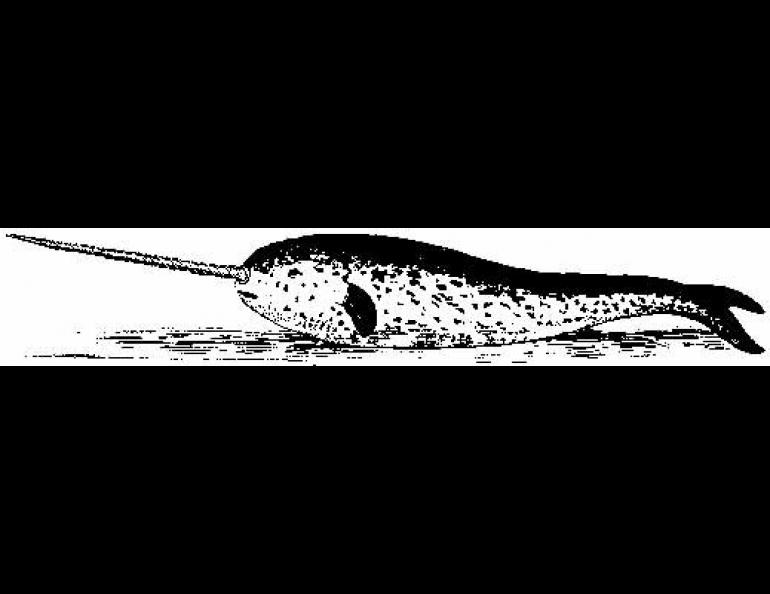
The Twists in the Narwhal's Horn
As whales go, the narwhal seems a modest beast, wearing a discreet dapple-gray hide and keeping to high Arctic waters where tourists seldom go. That is, it seems modest enough until you come to its nose, for there the males of the species sport a single grand horn unique in the animal kingdom.
Canny northern traders a few centuries back called these ivory protuberances "unicorn horn," and sold them at great profit to medieval princes. Modern zoologists know they are not horns but modified teeth, akin to walrus tusks, and consider them display organs--one of their uses is in an aquatic equivalent to bragging matches, for male narwhals to brandish and show off before females. Possible other uses are the subject of disputes among scientists, since the shy narwhals are seldom observed, but some adult male narwhals have scars that could have come from competitors' tusks.
For teeth, narwhal horns seem excessive. A full-grown bull narwhal is quite small for a whale, reaching less than five meters (about fifteen feet) from nose to tail. Its tusk can add half as much again to that dimension. They typically range in length from 1.8 to 2.5 meters (5 feet 6 inches to nearly 7 feet 8 inches), and even longer ones have been found.
Consistently, it's the upper left tooth that sets off to become the tusk. As it grows, it forms a continued solid spiral, a pattern faithfully reproduced by artists trying to capture the likeness of the unicorn. Why this twisted growth should occur is a question that has long had no good answer.
One theory held that the propulsion provided by the narwhal's tail was somehow unbalanced, and this asymmetrical driving force was balanced by the twisted tusk. Neither the laws of physics nor observations of swimming narwhals seem to support that hypothesis, but no one came up with a better idea until recently.
Canadian scientists Michael C.S. Kinglsey and Malcom A. Ramsay, writing in the journal Arctic, suggest that the twisted tusk is what lets narwhals swim straight. They point out that, like all teeth, the narwhal's tusk grows from new material deposited at its root. Unless the rate at which new material is added is perfectly even all around the root, one side of the tooth would grow faster. A tusk unevenly grown like that would necessarily be curved. That is what happens with other tusk-bearing mammals, like walrus and elephants.
The likelihood of one section of the root growing just a bit faster than another is great, and a long curved tusk would hamper a narwhal's swimming ability. But if the tusk twists as it grows, each point on it passes in turn over regions of faster and slower growth in the socket. Any imbalance in the rate of growth evens out, and the result is a tightly twisted tusk with a straight axis.
Close examination of narwhal tusks seems to support this theory. The spiral growth form is easy to see because the rate of growth does vary around the root, leading to a twisted-ridge effect with hollows and highs like a rope.
Distant observation of swimming narwhals shows that their "horns" are surely straight, for they move as well as their dolphin cousins--even though they are following those mighty, twisted tusks.





